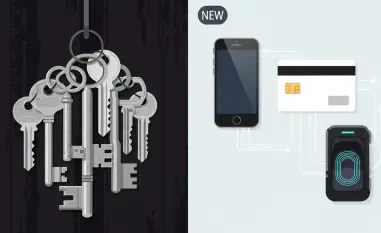Recent disclosures highlight critical vulnerabilities in SonicWall’s Secure Mobile Access (SMA) 100 Series, prompting urgent considerations for cybersecurity measures among its users. The United States Cybersecurity and Infrastructure Security Agency (CISA) has cataloged two significant vulnerabilities with different impact levels, shedding light on the technological threats faced by organizations utilizing these systems. The first vulnerability, CVE-2023-44221, is a command injection flaw post-authentication with high severity implications, permitting the execution of arbitrary commands. This vulnerability involves the SMA SSL-VPN interface, affecting models such as the SMA 200, 210, 400, 410, and 500v. The second critical vulnerability, CVE-2024-38475, concerns pre-authentication arbitrary file reads linked to the Apache HTTP Server, granting attackers access to the server’s file system locations. Given these concerns, there’s a pressing need to explore protective measures for users interacting with these infrastructures.
Understanding the Exploits
The Nature of CVE-2023-44221
The CVE-2023-44221 vulnerability underscores the imperative of cybersecurity diligence, allowing potentially severe breaches. This post-authentication command injection flaw arises from insufficient neutralization of special elements within SonicWall’s SMA SSL-VPN management interface. Such inadequacy paves the way for remote authenticated attackers to execute arbitrary commands with administrative privileges. Given its high severity, the flaw bears a CVSS score of 7.2. It impacts several SMA series models, creating vulnerabilities for numerous organizations that rely on these systems for secure remote access. Identified by security researcher Wenjie Zhong, SonicWall responded promptly by releasing a patch in December 2023. Despite this precaution, SonicWall acknowledged active exploitation by April 2025. This admission highlighted the necessity for continuous vigilance and updates to mitigate potential risks effectively.
The Risks with CVE-2024-38475
CVE-2024-38475, a critical vulnerability with a CVSS score of 9.8, further amplifies security concerns for SonicWall users. This pre-authentication flaw primarily involves arbitrary file reads closely associated with the Apache HTTP Server that SonicWall systems utilize. The vulnerability emerged due to the integration of a susceptible version of Apache, which allows unauthorized access to file system locations served by the server. Though initially classified as an Apache issue, its impact extended to SonicWall’s SMA products following Apache’s disclosure in July 2024. The vulnerability’s detection was attributed to cybersecurity expert Orange Tsai, prompting SonicWall to issue advisories addressing six vulnerabilities, including CVE-2024-38475. Fixes were rolled out by December 2024, yet to safeguard affected systems, users must diligently apply those updates and monitor any signs of exploitation actively.
Mitigating Active Threats
SonicWall’s Response and User Actions
In response to the escalating threat landscape, SonicWall has actively pursued mitigation strategies as part of its commitment to cybersecurity resilience. The company released consecutive advisories and updates to address the vulnerabilities outlined and urged users to apply patches routinely. Regular updates and communication channels ensure stakeholders are informed about risks and solutions. Users are advised to maintain an environment of vigilance by implementing strong authentication measures, enabling intrusion detection systems, and adopting robust firewall configurations. These actions help mitigate the possibility of unauthorized access while protecting sensitive data and infrastructure against exploitation. SonicWall’s acknowledgment of active vulnerabilities serves as a call to action for enhanced user participation in reinforcing defenses against burgeoning threats.
Future Considerations and Improvements
Looking forward, SonicWall users must remain prepared for evolving attack vectors and strengthen their defense mechanisms to ensure sustained security. Continuous review of security policies and auditing of systems can aid in identifying weaknesses that might be exploited. Enhancing user awareness through training and simulation exercises equips teams to recognize and respond to potential cyber threats effectively. In alignment with technological advancements, SonicWall endeavors to bolster its security architectures and release timely updates that align with industry best practices. Adopting multidimensional security strategies and investing in advanced threat intelligence tools will contribute to minimizing risks. Addressing these vulnerabilities paves the way for future preparedness, encouraging proactive measures for thwarting cyber threats across diverse IT landscapes.
Towards a Secure Network Future
Recent revelations have exposed significant vulnerabilities in SonicWall’s Secure Mobile Access (SMA) 100 Series, raising serious cybersecurity concerns for its users. The U.S. Cybersecurity and Infrastructure Security Agency (CISA) has identified two major vulnerabilities with varying levels of impact, highlighting the technological risks that organizations using these systems face. The first vulnerability, identified as CVE-2023-44221, is a high-severity command injection flaw that occurs after authentication. This flaw allows the execution of arbitrary commands, particularly affecting the SMA SSL-VPN interface on models like SMA 200, 210, 400, 410, and 500v. The second significant vulnerability, CVE-2024-38475, involves pre-authentication arbitrary file access, associated with the Apache HTTP Server. This allows attackers to access certain files on the server. Given these critical issues, it’s imperative for users to actively seek protective strategies to secure their systems against these vulnerabilities and safeguard sensitive data.













